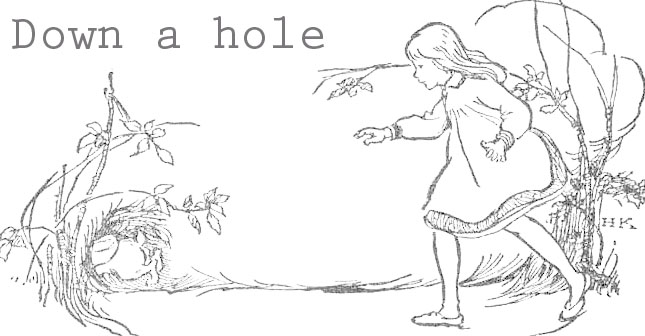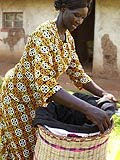Tuesday, October 20, 2009
Vee Plaas
Today I went to Vee Plaas, a township I never actually knew about before. Its smaller than the ones I have been to beofr, but still quite large in size. There are mainly shacks there, with very few government houses. I had the opportunity to meet Elvis and his partner, he works for a family friend of mine. I also had the opportunity to meet and speak to some of their nieghbours, and to see their homes. They all collected water from a tap in the centre of the settlement, and used parrafin stoves. There was not much else in the their home- like the George family, in fact even less really. One thing I did notice about the George family was that they kids did not even have pencil crayons to draw with. Once again food and education came up as things I had noted here. I really would like to create somthing that help people beyond it just being a simple object- perhaps something that involves skill learining.
Resourcefulness


I love going to my uncle Brian's house, there's always something new to look at- I particularily like the pillar drill in his workshop- Its connected to another machine, then to a motor to run.. it reminds me a bit of India. Which got me thinking, is resourcefulness a generational or cultural thing- or maybe a mixture of both... I know that its foreign to most people my age, which make me think that its generational. Though Stefano suggested once that maybe the western way of being resourceful is by getting something for a bargain price. I still think there are more practical ways of being resourceful though.
South End

One Sunday my dad took me and my sister around the area formally known as South End. We went to where my dad and my grandfather grew up, before they were removed from their homes and put into specific racially segregated areas. It's so strange to think this happened to my parents an their friends, but the more I return home, the more I realize how scared this country and its people still are from apartheid. Julian's advice on 'meeting people where they're at and working with them to move forward together' has never made more sense.
The George family and friends

Last week Thursday I went to Motherwell with some volenteer workers into Motherwell, to meet two families. The first was three kids whos parents had died, their ages were between 13 and 2 years old. They are currently living in a social workers office which has been coneverted into a bedroom, untill they are finished building a forth orpganage. They are lovely kids and I spent the morning with them - its crazy to think of how many kids are now orphaed by aids, or are having to look after a sick parent and teir pamily members.
We then went to meet the George family, they are alos three kids who's parents have passed away and are now living with their granddad. Unfortunatley he hsa become ill, and now cannot walk, so they will be living with their aunt who has moved down from Durban to look after the family. We spent sometime with the family and went shopping for groceries fro them(this gave me a chance to see more of motherwell, which is not as dangerous as it seems- though you do have to be careful wherever you go). While spending time in their home I had a chance to observe their surroundings, they had electricity so were using two hot plates to cook. They did not have anywhere to store their food though and no running water, but had a large cabnet and a tv deviding the room. This was a gevrnment house, which was not to small but had nothing and does not change if the family were bigger. It was areally great to meet the family, who are lovely and very friendly and a good opportunity to observe how people live. One thing I did realize was that it is so silly that kids still have to buy school uniforms when they can hardly afford food to eat.
hmmm... clean
Wednesday, October 14, 2009
Emmanuel Haven



So today I went to Emmanuel Haven- a community centre, clinic and hydoponic farm in a township called Motherwell. They're main focus is to take on the problem of HIV and aids in the community. Motherwell has roughly half a million people in it, of which around 40% have HIV/Aids. It was really amazing, the kind of place that makes you want to stop what you're doing and join their cause. The farm, feeds local patients of the community as well as creates employment, and sustains the community centre and clinic through their sales. They are currently supplying to mager companies within the country- so it is completely self sufficient.
They also have various adult learning facilities and are currently starting skills teaching in shoe making, something I really like about this is that all of their skill programs are 'incubator' programs, so that they can set people up for employment or their own businesses. I found that their outlook and approach was really interesting, and they also made me consider educational design- teaching the user about healthy habits. I also learnt some really interesting facts about farming on a large scale, as well as on a single houshold scale.
Tuesday, October 6, 2009
Magic!!

This is an amazing idea, Its called the fireless cooker. Its made up of local and old material. In the end its is a basket with old cloth and dried banana leaves which after heating food temporarily, it retains heat and continues to cook the fool without any fuel. There has been a theme in my research of food preservation and the use of traditional techniques to do so. Such as the use of silver in a pot, to stop food from growing moldy.
Waste For Life


The Organization waste for life (there's a link to their site under the links label) has created the Kingston Hot Press (KHP), which is a manually operated hot press designed to make tiles of composite plastic. The plastic waste is heated between a mould. The key fact is that the presses are manually operated, and affordable to create. I particularly like the idea of using ceramics as a heat conductor.
trashy times
Monday, October 5, 2009
Statement 05/10/09
Over the past year I have developed an interest in the concept of innovation through necessity. Designing or making focused around “basic need” first, rather than the luxury of western society.
I intend to focus my third year around design intervention within my home town of Port Elizabeth, South Africa. I will be looking at the housing/interior layout of government houses(match-box housing) and shanty towns. I would like to create objects/pieces using the local resources and commissioning local makers where possible, taking into consideration the cultural aesthetic of South Africa. Before returning home, I hope to research into the use of duality within objects and resourcefulness within re-use/recycling. I will be testing and researching these ideas while in the UK, specifically looking at the use and transference of traditional skills within development projects within developing countries, as well as basic design ad manufacturing skills. South Africa has rich source in handi-craft skills, using plastic bags, metal tins and wire work. I will be looking at the use of found/recycled materials specific to South Africa.
Once in South Africa I will begin my research by interviewing various home owners within a township called Motherwell, documenting their homes and movements through the use of photography, film and drawings. I will be visiting a community project set up within the area called Emmanuel Haven. I expect this research to inform the second phase of my projects, where I will be hoping to propose a design solution based around my research at home. This issue may most likely be related to the home and the use of its space
The design approach of the '10 x 10 project' will be helpful to my research, there research in South Africa's indigenous techniques informed there making approach, as well as designing with the idea that 'the simplest way is the best'.
CWP


CWP is a ceramic water purifier. It is made made with a mix of local terra-cotta clay and sawdust or other combustible, such as rice husks. After the object has been fired it is coated in colloidal silver. This filters through 99.88% of most water born disease agents.
Silver has been used in the past for food preservation if used carefully.
http://s189535770.onlinehome.us/pottersforpeace/wp-content/uploads/brief-history-of-colloidal-silver.pdf
Sugarcane coal
EcoFea Bricks

I really like the idea of these EcoFea Bricks, 75% of them are made up of cattle waste. They Are also stronger and lighter than normal bricks. I would possibly like to consider the use of waste, or by products in order to make a material. This would be subject to cost and would also take into consideration weather or not it could be made by locals, or involve the user.
Stoves




These are examples of stoves made to prevent house fires in villages and developing areas. They all incorporate ceramic, which heat and is a mterial easily accessible. The Indian stoves (chula) have been adapted by philips in order to allow for easier cleaning and assemblage. Once again this is an example of traditional methods being improved on, rather than changing all togther- working tradition in a way.
10x10 Housing Project


The 10x10 Housing project it an alternative housing project. It was set up by the Design Indaba team, who got together a group of designers and architect firms to solve housing problems within Freedom Park a town ship within greater the Cape Town area. This one was initiated by Luyanda Mpahlwa of MMA Architects, it uses traditional techniques of mud and wattle building techniques. The houses have wooden frames and are then filled in with sand bags, tis is in that it included the home owners within the building process. It was then covered over in cement. I particularily like this project for two reasons, one is its use of traditiona techniques to inform the building ps and the other is the research approach that each team had. They were given video tapes with interviews of family who's house they were building, in order to understand what was needed to be designed. I feel this is a good example of design within a context and place based learning and working, this is the reason I am returning home in order to design within the context I hope to work.
Q Drum


I first saw this design by P. J. and J. P. S. Hendrikse in Milan 2009, it immediatly caught my eye as the type of social design I would love to do. It's a water drum that holds up to 5 liters of water. It was designed to allow the user to have the minimum amount of injury or train when fetching water over long distances. I particularily like that it is not a complicated design, it solves a problem and is most likely going to last for generations with no need for upgrade. It reminding me of indian water storing vessels. The still to this day follow the same basic shape, even though they may now be created out of non-clay materials.







